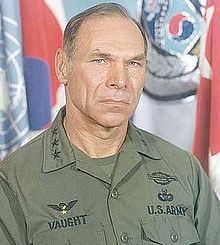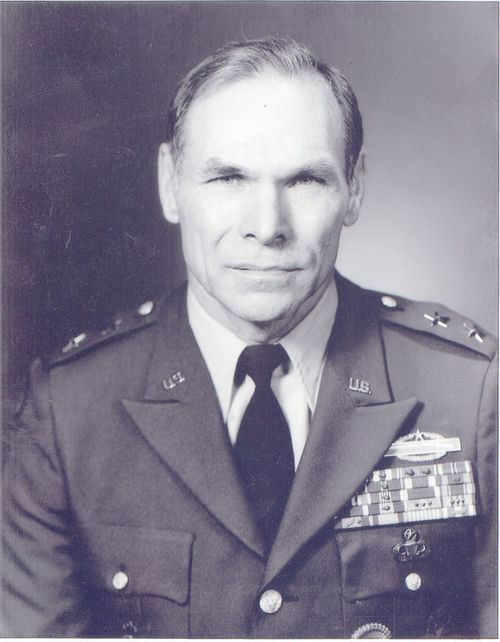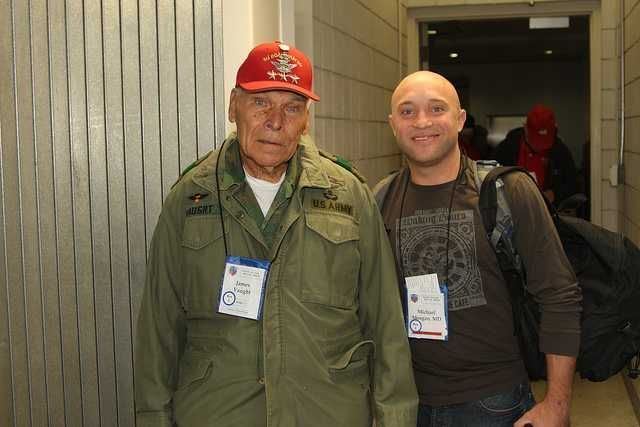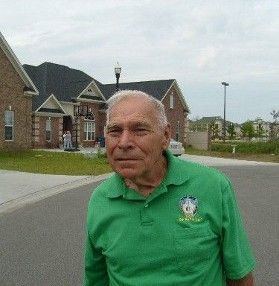Years of service 1944–1985 | Rank Lieutenant general Name James Vaught | |
 | ||
Born November 3, 1926Conway, South Carolina ( 1926-11-03 ) Commands held 24th Infantry Division5th Battalion, 7th CavalryDirector of Operations and Mobilization for the Army Similar People Charles Alvin Beckwith, Jimmy Carter, Ruhollah Khomeini, Abolhassan Banisadr, Joseph Stalin | ||
Allegiance United States of America | ||
Lt general james b vaught
James Benjamin Vaught (November 3, 1926 – September 20, 2013) was a United States Army General who fought during three wars: World War II, the Korean War, and the Vietnam War. In Korea he served as a company commander in the 24th Infantry Division and in 1967, in the Republic of Vietnam, on his first tour he served as the commanding officer of the 5th Battalion, 7th Cavalry. He has also played a major role in numerous United States Special Forces operations.[1]
Contents

Early life and military career

Vaught grew up in Conway, South Carolina. A multi-generational native of the state, he has been identified as a direct descendant of Francis "Swamp Fox" Marion. However, this is in dispute, as there are no known direct descendants of Marion. He graduated from high school in 1943 and then was enrolled at The Citadel in Charleston, South Carolina. During this time, with World War II being fought by Allied forces in two theaters, the Federal Government's Military Draft was altered so that college students were eligible. In 1944, Vaught was one of those drafted by the United States Army, though he was able to graduate and become a member of the Citadel's class of 1946. Now in the Army, he was commissioned and became an officer in 1945. After the war he served three and a half years in Germany.
Korea and Vietnam

After his duty in Germany ended, Vaught had a relatively short stay back in the U.S. before he was sent to Korea, where he was involved in the fighting against the communist forces of North Korea and China. He saw combat on several occasions after his landing at Pusan and the subsequent advance north towards the Yalu River. During this time he was injured twice. Later, in 1967 during the Vietnam War, he was sent to South Vietnam, where as the battalion commander of the 5th Battalion, 7th Cavalry, he played a key role in the liberation of Huế city during the Tet Offensive of 1968. He also helped the besieged Marines at Khe Sanh until the North Vietnamese Army retreated after failed attempts to take the base. Vaught was later injured in an auto accident which resulted in him being medevaced, in a full body cast, to Walter Reed Army Medical Center. Although the "Vietnamization" policy was thought of as a failed concept, Vaught was a proponent of the policy and was a valuable asset to it throughout his second tour of Vietnam.
Later life

After Vietnam, Vaught continued his career with the Army and was eventually promoted to Major General, serving at The Pentagon as Director of Operations and Mobilization for the Army. Perhaps his most notable role was played during "Operation Eagle Claw", the infamous failed rescue mission of hostages in Iran, where General Vaught served as the overall Commander of the operation. When Vaught commanded the mission to rescue the hostages in Iran in 1980, eight service members died and four were injured in the operation when the helicopters on the mission collided in the remote Iranian desert. Although President Carter went on television the next day to announce the failure of the mission and to accept the blame, Congress and the Pentagon launched inquiries to determine the reasons for the tragedy. The Pentagon probe was handled by a board of three retired and three serving flag officers representing all four services; it was led by retired Adm. James L. Holloway III. The commission's report listed 23 areas "that troubled us professionally about the mission-areas in which there appeared to be weaknesses. The major criticism was of the "ad hoc" nature of the task force, a chain of command the commission felt was unclear, and an emphasis on operational secrecy it found excessive. The commission also said the chances for success would have been improved if more backup helicopters had been provided and if a rehearsal of all mission components had been held.

James B. Vaught served his final tour of duty as a Lieutenant General serving in Korea, where he was the Commanding General of the Combined US/South Korean forces. He resided in Myrtle Beach, South Carolina after his retirement in 1985.
Death
Authorities found his body in an Horry County, South Carolina pond. While Vaught died of asphyxia due to drowning, the coroner stated that his body also showed signs of cardiac disease. He was 86.
